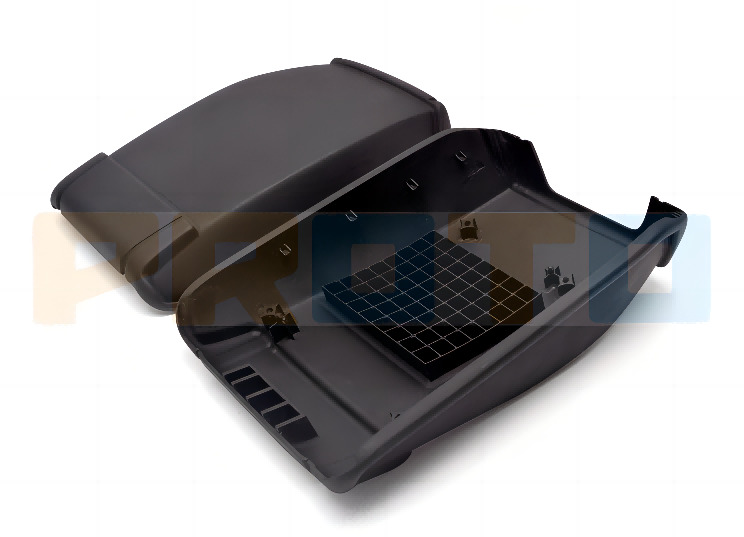The Process of Plastic Injection Molding:
The plastic injection molding process involves injecting molten plastic into a mold cavity in a predetermined shape and size. The process starts with the preparation of raw plastic material, which is fed into the injection molding machine’s hopper. The machine then heats and melts the plastic, injecting it into the mold cavity via a nozzle at high pressure.
Once the plastic fills up the mold cavity, it is cooled and solidified, and the mold is opened to eject the finished product. The process is highly automated, allowing for a high level of precision, repeatability, and efficiency.
Types of Plastic Injection Molding Machines:
There are different types of plastic injection molding machines, including vertical, horizontal, and electric machines. The choice of machine depends on factors such as the size and type of part, required production volume, and budget.
Vertical machines are ideal for insert molding, where metal or other materials are inserted into the mold cavity. Horizontal machines are more common and versatile, allowing for a broader range of part sizes and shapes and higher production volumes.
Electric machines are also becoming more popular due to their energy efficiency and faster cycle times, minimizing production costs and environmental impact.
Plastic Injection Molding Materials:
Plastic injection molding can work with a wide range of plastic materials, including thermoplastics, thermosets, elastomers, and composites. The choice of material depends on the desired properties of the finished part, such as strength, durability, flame resistance, and color.
Common materials used in plastic injection molding include polypropylene, polystyrene, polyethylene, ABS, nylon, PET, and PVC. Each material has its unique characteristics, advantages, and limitations, making it important to select the right material for the application.

Advantages and Disadvantages of Plastic Injection Molding:
Plastic injection molding offers numerous advantages, such as high production efficiency, low material waste, repeatable and precise part quality, and design flexibility. It also allows for the manufacturing of complex and intricate parts with minimal assembly needs.
However, the process also has some disadvantages, such as high initial setup costs, the dependence on tooling, limited range of material properties, and the potential for part defects and variations.
Applications of Plastic Injection Molding:
Plastic injection molding is used in various industries, including automotive, aerospace, medical, consumer goods, and electronics. Its versatility and precision make it ideal for producing components and parts such as automotive interiors, medical devices, electronic housings, toys, and packaging.
Conclusion:
In conclusion, knowing the basics of plastic injection molding is vital for mechanical engineers, designers, and buyers to optimize the design and manufacturing of plastic parts. The process involves injecting molten plastic into a mold cavity at high pressure and temperature, producing precise and repeatable parts with minimal waste.
There are various types of injection molding machines, materials, advantages, and disadvantages, making it essential to select the right combination for your product. Plastic injection molding is widely used in different industries due to its versatility, flexibility, and precision.
By understanding the process and its variabilities, product designers, manufacturers, and buyers can optimize the production of plastic parts and bring their visions to life.